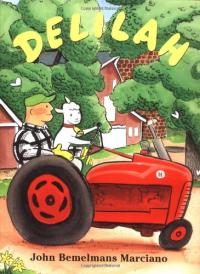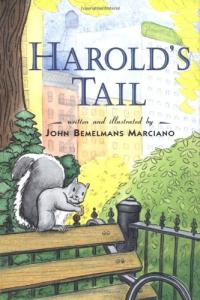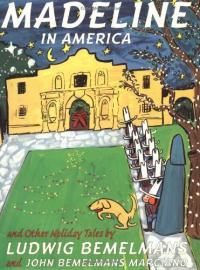
Biography
John Bemelmans Marciano was born in 1970 and grew up on a horse farm in Three Bridges, New Jersey — an hour’s drive from downtown Manhattan. He graduated from Columbia University, and worked at a variety of jobs, including reporter in a small town. He is a self-taught artist and works in a studio that sits right across the street from his childhood farm. The studio is a converted 100-year-old country department store.
While looking through some of his grandfather’s belongings, Marciano discovered a completed manuscript for a Madeline story with rough sketches that hinted at what the final illustrations might look like. Bemelmans Marciano took this story and developed a finished set of drawings to publish Madeline in America and Other Holiday Tales, a new addition to the series his grandfather started.
In addition to this first Madeline book, Bemelmans Marciano has written several other Madeline stories (one set in Rome), a first-person chapter book about a squirrel who lives in a New York City park (Harold’s Tail), a picture book about a resourceful and individualistic lamb (Delilah), and a book on the life and art of Ludwig Bemelmans.
Books by this author

Take a journey through the life of Renaissance man Ludwig Bemelmans, author of the beloved Madeline series and accomplished painter. This book was written by his grandson, John Bemelmans Marciano, who has since continued the legacy of Madeline.
Bemelmans: The Life & Art of Madeline’s Creator

Farmer Red decides to buy a lamb to cure his loneliness. He couldn’t afford to buy the fancy educated sheep, so he ends up with an uneducated lamb. He names her Delilah and they quickly become the best of friends. Delilah becomes such a help on the farm, that Red is soon able to afford educated sheep… but the new sheep bring new conflicts.
Delilah

Harold the squirrel is living the life in New York City, feasting on nuts from a kind old man in the park. The old man never feeds, the rats, though. One rat, angry at this fact, tells Harold the only difference between himself and a rat is his fluffy tail. Determined to prove the rat wrong, Harold shaves his tail… only to be proven wrong himself.
Harold’s Tail

When Miss Clavel takes her 12 charges to Rome, they not only see the sights but meet a thief and rescue a house full of cats. This all-new Madeline adventure is comparable to the early ones but has been created by Bemelmans’ grandson.
Madeline and the Cats of Rome

From an elephant to a butterfly, Madeline meets and interacts with a series of creatures. Simple rhymes and signature illustrations appear on sturdy pages.
Madeline Loves Animals

Madeline introduces manners for many situations in rhyme, illustrated with light lines and watercolor illustrations.
Madeline Says Merci: The Always Be Polite Book

Luca is lonely and tired of spending his summer working in his parents’ café; that is, until he has an amazing adventure in the canals of Venice on the back of a dolphin. Playful line and wash illustrations add joy to the imaginative adventure.
There’s a Dolphin in the Grand Canal
Books by this illustrator

Madeline takes a trip to Texas when she is told that her great-grandfather left her an inheritance. The manuscript was complete when Bemelmans’ grandson found a completed manuscript and illustrated it as his grandfather might have done.